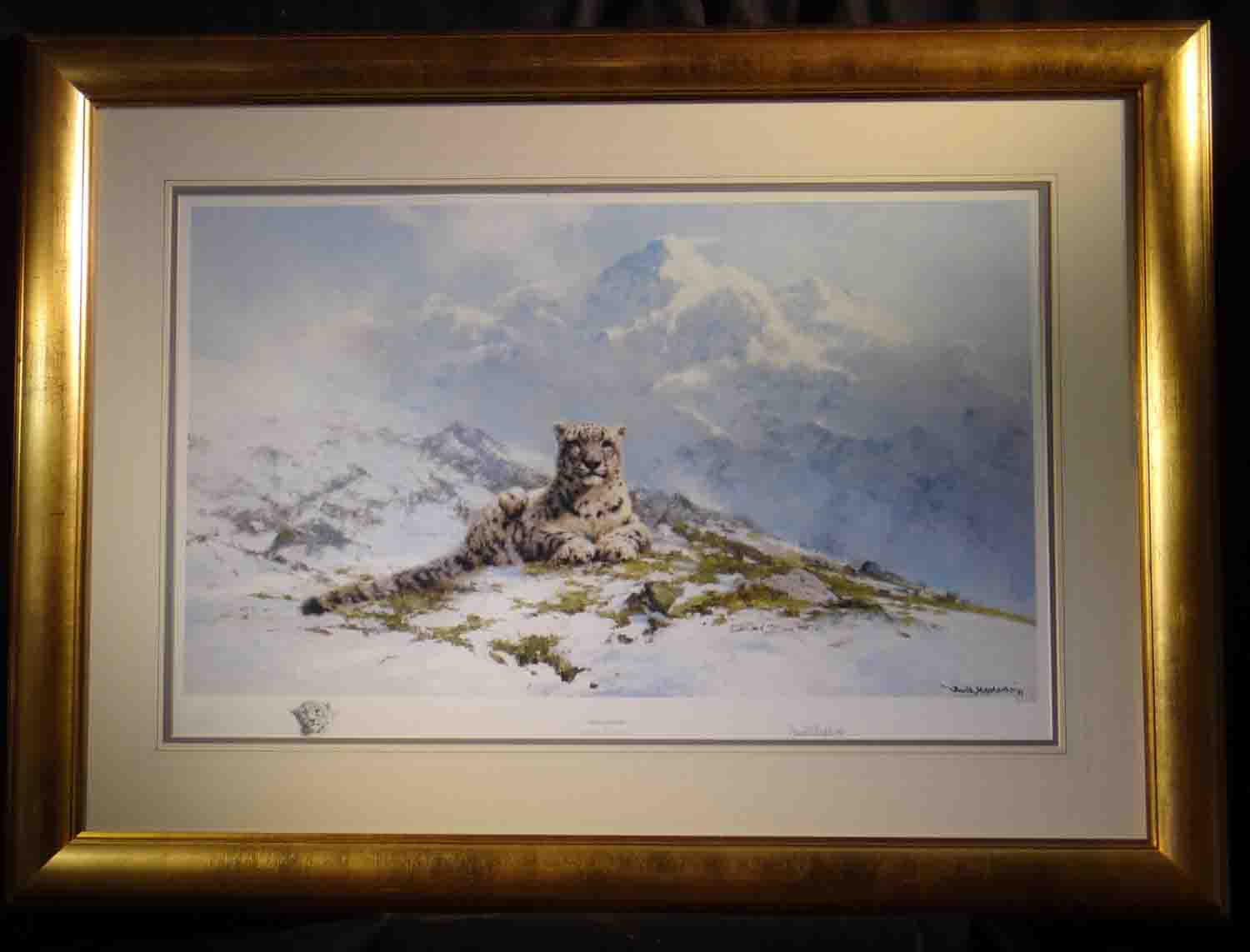Snow Leopard
David Shepherd

'Snow Leopard'
Signed Limited Edition of 950
Date of publication March 1993
Image Size 16" x 27.5"
The snow leopard is listed in CITES Appendix I.[66] It has been listed as threatened with extinction in Schedule I of the Convention on the Conservation of Migratory Species of Wild Animals since 1985.
Hunting snow leopards has been prohibited in Kyrgyzstan since the 1950s.
In India, the snow leopard is granted the highest level of protection under the Wildlife Protection Act, 1972, and hunting is sentenced with imprisonment of 3–7 years.
In Nepal, it has been legally protected since 1973, with penalties of 5–15 years in prison and a fine for poaching and trading it.
Since 1978, it has been listed in the Soviet Union's Red Book and is still inscribed today in the Red Data Book of the Russian Federation as threatened with extinction.
Hunting snow leopards is only permitted for the purposes of conservation and monitoring, and to eliminate a threat to the life of humans and livestock.
Smuggling of snow leopard body parts is punished with imprisonment and a fine.
Hunting snow leopards has been prohibited in Afghanistan since 1986.
In China, it has been protected by law since 1989; hunting and trading snow leopards or their body parts constitute a criminal offence that is punishable by the confiscation of property,
a fine and a sentence of at least 10 years in prison.[69] It has been protected in Bhutan since 1995.
At the end of 2020, 35 cameras were installed on the outskirts of Almaty, Kazakhstan in hopes to catch footage of snow leopards.
In November 2021, it was announced by the Russian World Wildlife Fund (WWF) that snow leopards were spotted 65 times on these cameras in the Trans-Ili Alatau mountains since the cameras were installed.
30 years experience and a collection of hundreds of David Shepherd, limited editions!
Studio open, 7 days a week!Viewing by appointment
Original paintings sold from various sources
EMAIL:-administrator@davidshepherd.com
Back to David Shepherd prints for sale